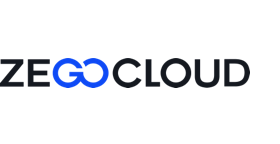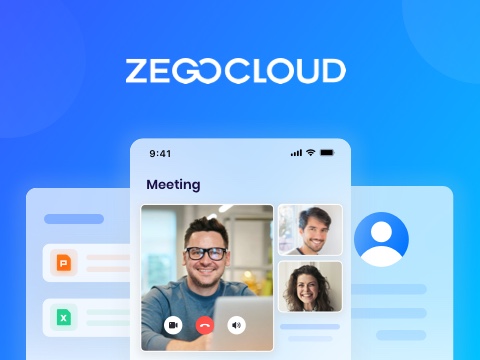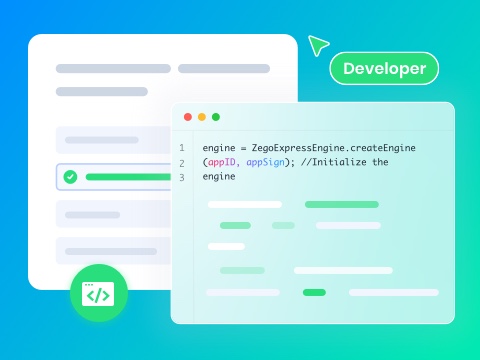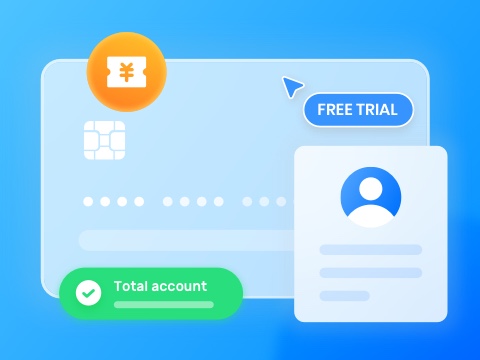AI recruitment in 2026 is set to transform how companies find and hire talent. Here, innovative algorithms analyze the data and streamlines the hiring process with precision and speed. Additionally, organizations can reduce bias and improve decision-making while candidates receive more personalized opportunities. So, this article explains this term and highlights why it’s essential in various use cases.
What is AI Recruitment?
AI recruitment uses artificial intelligence and machine learning to improve how companies hire candidates. Hence, it reduces manual screening by using AI to analyze skills and candidate data, while human recruiters still conduct and finalize interviews.
Additionally, AI examines past hiring data to identify patterns that indicate potential job fit, though it cannot fully or accurately predict long-term performance. An AI recruiter also measures communication and sentiment to help evaluate candidates.
Why is AI Recruitment Important?
Many users are unaware that AI in recruiting automation now makes job hiring seamless with innovative tools. That is why this section gathers the key details on its importance to determine if it’s worth a try:
- Efficiency and Speed in Hiring: AI can handle various tasks where it screens the resume, ranks the candidate, and schedules the interview. Thus, this reduces the time needed to fill jobs and lowers the workload for HR teams. Besides, recruiters can focus on creating strong relationships with candidates and plan strategies instead of routine administrative work.
- Improved Candidate Matching and Quality: Moreover, AI has the capacity to analyze numerous data points in which skills, experience, and culture fit against the demands of the job. This leads to more precise shortlists, better quality matches, and better employee retention in the long run.
- Reduce Human Bias: This solution can also be used to reduce the unconscious bias on gender, ethnicity, or background in well-trained and monitored cases. By doing so, it will develop fairer judgments, enhance diversity, and comply with equal opportunities laws.
- Scalability and Flexibility: AI systems can support thousands of applications simultaneously, and can support mass hiring or expanding the business rapidly. In addition, the system is able to adjust to small businesses as well as large enterprises without reducing the quality.
- Data-Driven Decisions: The AI recruiters are also able to utilize analytics to reveal sourcing, hiring delays, and candidate performance. Additionally, employers will be able to make smarter decisions, plan budgets, and provide continuous improvement of the recruitment processes.
Benefits of AI in Recruitment
If you decide to use some affordable AI recruiting tools for a seamless hiring process, you need to know what perks they will give. Therefore, glance at some of its significance, learn how to improve candidate matching:
| Benefit | Description | Impact on Recruitment Workflow |
|---|---|---|
| Faster Screening & Shortlisting | AI scans thousands of resumes and applications in seconds, selecting top candidates automatically. | Cuts time-to-hire and reduces HR administrative tasks. |
| Improved Quality of Hire | AI analyzes skills, experience, and cultural fit using data-driven algorithms. | Boosts employee retention and job performance. |
| Reduced Human Bias | AI focuses on objective criteria, ignoring demographics or personal data. | Encourages fair hiring and enhances workplace diversity. |
| Scalability & Volume | Automated systems handle thousands of applications at once for large-scale hiring. | Manages high-volume recruitment without loss of quality. |
| Enhanced Candidate Experience | AI chatbots and automated updates keep candidates informed throughout the process. | Increases satisfaction and lowers candidate drop-off rates. |
| Data-Driven Insights | AI provides analytics on sourcing, bottlenecks, and hiring trends. | Supports smarter decisions and an optimized recruitment strategy. |
| Automated Interview Scheduling | AI books interviews, sends reminders, and adapts schedules in real time. | Saves recruiter time and reduces scheduling conflicts. |
| 24/7 Operation & Responsiveness | AI works nonstop, answering candidate queries and processing submissions instantly. | Keeps recruitment processes moving outside business hours. |
Use Cases of AI Recruitment
To know where and why you can use AI in recruitment, startup recruiters need to know its use cases. So, this section highlights 5 ideal use cases of this solution to help you take its full advantage:
1. High-Volume Recruitment
Companies that receive hundreds or thousands of applications for a single role can use AI to quickly scan resumes. AI recruitment software scans thousands of resumes and uses OCR to scan CVs and Resumes. Additionally, you can rank applicants based on fit to job descriptions and leverage NLP to extract the data.
With this, you can get a list of top talent from unconventional backgrounds, as the AI analyzes patterns from historical hires. So, it saves manual work and ensures fair, unbiased evaluation of every application.
2. Diversity and Non-Traditional Talent Search
The AI helps companies that want to hire candidates with unusual backgrounds, in order to focus on abilities and potential rather than on job titles. AI tools can be used to search job boards, LinkedIn, GitHub, and other professional networks with the help of web scraping and semantic search algorithms. In this way, these AI tools reach transferable competencies, work history, and situationally, on top of simple keyword searches.
3. Time-Critical Hiring
AI recruiting is also best for businesses that need to fill urgent positions while managing the workflow. Therefore, AI can prioritize and filter out candidates on the spot to cut time-to-hire by a large margin. It also ensures that vacant positions of crucial roles are not left vacant.
4. Fair and Objective Evaluation
Employers also have an equal opportunity to review all applications calmly with AI. In such a way, the AI systems will be able to disregard demographic data like age, gender, or ethnicity and prioritize objective qualification and experience. As an illustration, a multinational company that adopts equal opportunity employment can be found to act compliantly and to create a diverse talent force.
5. Integration with Recruitment Workflows
AI can be integrated with applicant tracking systems, HR software, and interview scheduling software. In this way, shortlisted candidates are able to advance to the next phase, i.e., interview organization or evaluation tests.
6. Predictive Success Assessment
The solution does not just rank candidates by existing abilities, but also forecasts performance with the help of past hiring information and role-specific analytics. This assists the recruiters in selecting those who will succeed and bring benefit to the organization in the long term. Therefore, it minimizes expensive hiring errors by bringing the possible gaps to the fore before the offers.
How to Implement AI in Recruitment
When developing AI recruiting tools, keep in mind that successful implementation requires clear objectives and guidance. Thus, this section offers you detailed instructions on how to create a solution that makes hiring a child’s play:
1. Assess Recruitment Needs and Goals
Determine the range of hiring issues at your organization first and target such areas as high volume of applications, sluggish time-to-hire, low diversity, or poor engagement. Therefore, set clear objectives of the adoption of AI, which can be faster resume screening, improved candidate-job matching, and enhanced candidate experience. So, having the objectives helps you select the right tools and determine success in the right way.
2. Choose the Right AI Recruitment Tools and Platforms
Select AI-powered platforms that match your organization’s size, industry, budget, and hiring goals. Thus, you can consider some of the listed options below to make a fair choice:
- Resume screening software to rank candidates automatically.
- Candidate sourcing platforms to find talent across job boards and networks.
- AI chatbots for candidate communication and engagement.
- Interview analytics tools to evaluate performance objectively.
Additionally, check for integration with your existing HR systems and applicant tracking systems to ensure a smooth workflow.
3. Integrate Communication Solutions like ZEGOCLOUD
To make the best use of AI recruitment tools, create a seamless candidate experience with tools like ZEGOCLOUD. This tool provides an AI agent solution you can use to build AI chatbots and avatars for seamless interview handling. The AI leverages NLP and TTS models with emotional awareness and noise cancellation features to make hiring seamless. Developers can also integrate SDKs like Video, Audio, and Chat to make interactions smooth.
Users can enjoy 4K video with the option for audio/video calls, where AI can keep track of the interview by displaying the chat on-screen. Furthermore, users can continuously chat with AI, as it responds within 500ms. Additionally, the platform ensures a lag-free experience with an average global latency of under 300ms, with a best-in-class 79ms. So, use its 20+ UIKits to enable personalized candidate journeys and remote hiring.
4. Automate Candidate Sourcing, Screening, and Engagement
While integrating communication tools, deploy AI software to:
- Collect and rank candidates from job boards, social media, and internal talent pools.
- Analyze resumes and profiles for skills, experience, and job fit.
- Use chatbots to answer queries and provide status updates.
Thus, automation reduces manual workload and improves consistency in candidate evaluation.
5. Leverage AI for Interviewing and Assessment
When developing affordable AI recruiting tools, use AI-driven assessment tools to perform the listed functions:
- Conduct video interviews, analyze for language, tone, and sentiment.
- Administer skill tests and score candidates objectively.
Hence, these tools help efficiently and fairly shortlist top talent, supporting scalable hiring without human bias.
6. Monitor, Evaluate, and Optimize Recruitment Processes
Now that you are near development, make sure to track the given metrics properly:
- Time-to-hire
- Quality of hire
- Candidate satisfaction
So, use analytics dashboards and AI insights to identify bottlenecks and areas for improvement. Also, update AI models regularly with feedback to refine accuracy and efficiency.
7. Ensure Compliance, Privacy, and Human Oversight
At this point, ensure that data privacy laws, including GDPR and CCPA, are followed. Make the role of AI clear to candidates and involve human recruiters in making final decisions. This improves fairness and ensures that situations AI cannot accurately interpret are handled properly by humans.
Tech Stack for AI Recruitment
As you decide to make an AI recruiting software, understanding the right tech stack is crucial to ensure efficiency. So, review the given table and determine which technologies suit your automation and recruitment process:
| Layer or Component | Technologies and Tools |
|---|---|
| Programming Languages | Python, Java, JavaScript, R, Scala |
| Machine Learning and AI | TensorFlow, PyTorch, scikit learn, XGBoost |
| Natural Language Processing | spaCy, NLTK, BERT, GPT, OpenAI API, Hugging Face |
| Data Storage and Databases | PostgreSQL, MySQL, MongoDB, Cassandra, Elasticsearch |
| Cloud Platforms | AWS, Google Cloud, Microsoft Azure, IBM Cloud |
| Web Frameworks | Django, Flask, Node.js, Express.js, React, Angular |
| UI and UX Technologies | HTML5, CSS3, JavaScript, Bootstrap, Material UI |
| Automation and Integration | Apache Airflow, Zapier, REST APIs, GraphQL, Celery |
| Containerization and Orchestration | Docker, Kubernetes, Helm, OpenShift |
| DevOps and Monitoring | Jenkins, GitHub Actions, Travis CI, Terraform, Prometheus |
| Security and Privacy | OAuth, JWT, SSL, and TLS encryption, GDPR compliance |
| Communication and Chatbots | Rasa, Dialogflow, Twilio, Microsoft Bot Framework |
| Analytics and Visualization | Tableau, Power BI, Plotly, Matplotlib |
Future of AI Recruitment
The future of AI in recruiting will transform hiring with smarter candidate matching and fully personalized experiences for both employers and job seekers. So, to determine its worth in the upcoming years, glance at some listed stats:
Adoption and Usage Rates
- Currently, 67% of organizations use some form of AI in recruitment. By 2030, 94% of all hiring processes are expected to use AI.
- 75% of HR professionals consider AI their top technology priority. In 2025, 54% of companies plan to increase AI recruitment spending by more than 40%.
- By 2027, 81% of recruitment processes are expected to adopt AI. Technology leads at 89%, followed by financial services at 76% and healthcare at 62%.
Market Growth
- The global AI recruitment market was around $596 million in 2025 and is expected to reach $860 million by 2030, growing at a 7.6% CAGR.
- Also, the overall AI in the HR market is projected to grow from $3.25 billion in 2023 to $15.24 billion by 2030, with a rapid CAGR of 24.8%.
Candidate Experience and Acceptance
- 82% of candidates value faster hiring with AI, but 74% still want humans to make final decisions.
- 87% of organizations plan to expand AI use in recruitment in the coming years.
- By 2030, 91% of companies are expected to adopt predictive performance models, and 76% will use AI-powered diversity and inclusion tools.
Conclusion
To sum up, AI recruitment will transform how companies find and hire talent and make mass hiring seamless. Therefore, this guide has explored how AI will benefit and how developers can build a reliable, affordable recruitment solution. So, as you get detailed assistance, integration of ZEGOCLOUD is suggested to have a communication-rich solution for candidates.
Let’s Build APP Together
Start building with real-time video, voice & chat SDK for apps today!










